Boom Cylinder For Takeuchi Small Excavator TB153FR
As one of the hydraulic cylinders manufacturers, suppliers, and exporters of mechanical products, We offer hydraulic cylinders and many other products.
Please get in touch with us for details.
Mail:sales@hydraulic-cylinders.net
Manufacturer supplier exporter of hydraulic cylinders.
Boom Cylinder For Takeuchi Small Excavator TB153FR
Introduction to Bucket Cylinders
A bucket cylinder, also known as a boom cylinder, is a vital component in hydraulic systems used in various heavy machinery, including excavators, backhoes, and front loaders. Its primary function is to control the movement of the bucket, enabling it to lift, lower, and tilt. This capability is essential for effective material handling tasks in construction and agriculture.
The bucket cylinder operates by utilizing hydraulic oil under pressure, allowing for smooth and controlled movement. This design offers significant advantages in terms of efficiency, enabling operators to perform complex tasks with ease. The ability to manipulate the bucket’s position precisely is crucial for digging, loading, and transporting materials, making the bucket cylinder an indispensable part of modern heavy machinery.
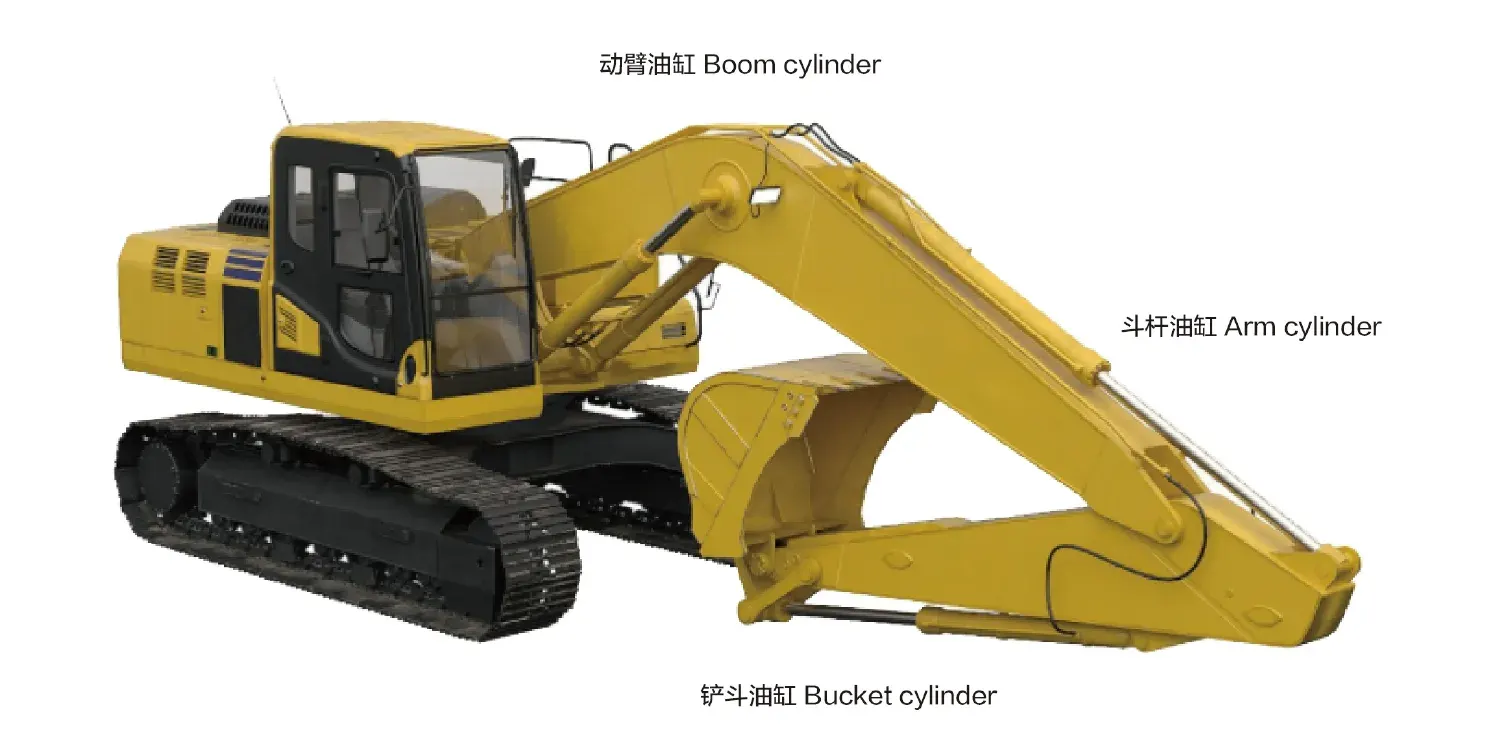
Key Features of the Boom Cylinder
- High Strength and Durability: Typically made from high-strength steel or aluminum, these cylinders withstand high pressures and heavy loads. They are designed to endure harsh working environments, featuring wear-resistant and corrosion-resistant properties to extend their lifespan.
- Efficient Hydraulic Operation: The boom cylinder utilizes the pressure of hydraulic oil for smooth extension and retraction, providing rapid response to operator commands and delivering powerful push and pull forces, making it ideal for handling heavy and complex tasks.
- Diverse Types: Depending on operational needs, users can choose between single-acting (operating in one direction) and double-acting (operating in both directions) cylinders. Some models are telescopic, allowing for greater extension without increasing external dimensions, suitable for constrained applications.
- Compatibility: Our products can perfectly replace various hydraulic cylinders, ensuring seamless integration and performance in existing equipment setups.
- Customizable Options: We offer tailored solutions to meet specific user requirements, ensuring every boom cylinder fits the operational needs of your machinery.
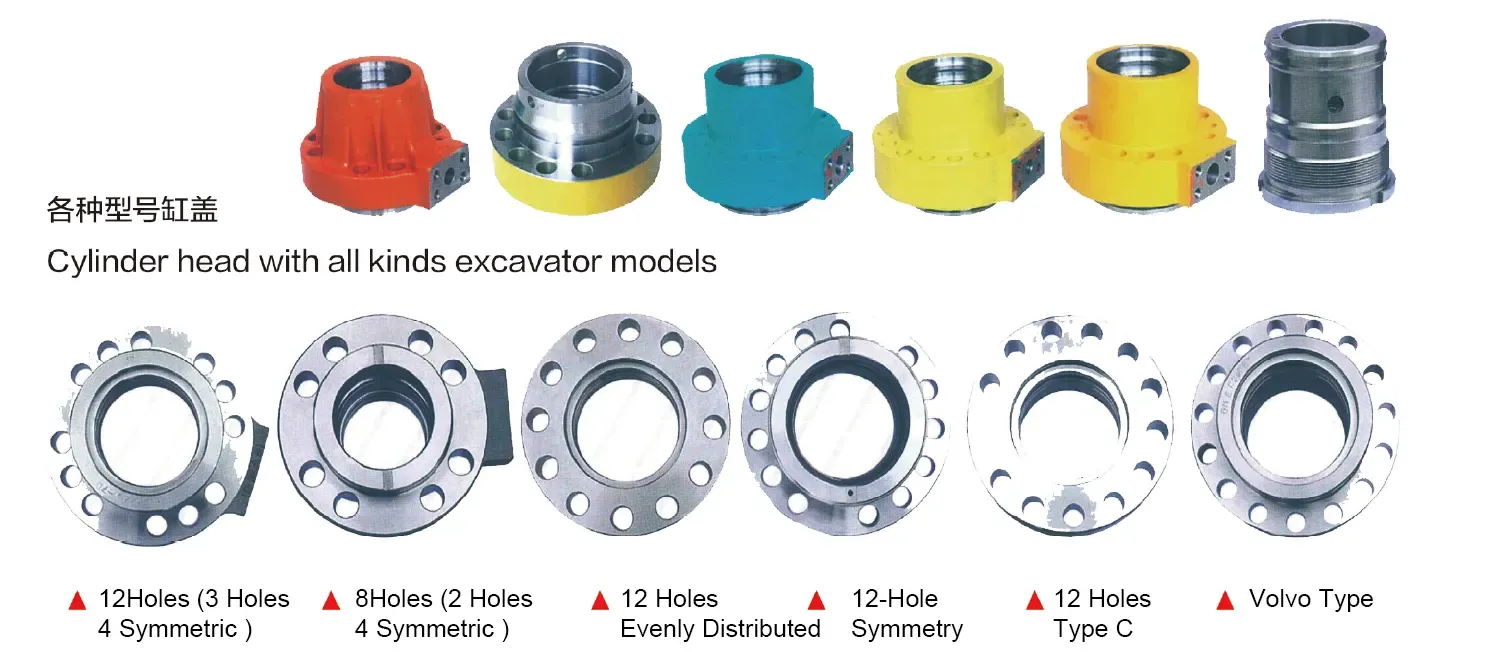
Applications of the Boom Cylinder
Construction Equipment
In excavators, boom cylinders play a crucial role in digging, loading, and transporting soil or debris. Their design allows for dynamic movements that enhance productivity on construction sites. For backhoes, the bucket cylinder aids both in excavation and lifting operations, making it an essential component for effective material management.
Agricultural Machinery
In frontend loaders, the bucket cylinder is responsible for scooping, lifting, and transporting soil, hay, and other materials. Its reliability ensures that agricultural tasks are completed efficiently, contributing to increased productivity on farms and agricultural sites.
Excavators
The bucket cylinder enables excavation actions by allowing the bucket to penetrate the ground effectively. This capability is fundamental for various digging operations, offering precision and power in one compact design, making it ideal for diverse soil conditions.
Loaders
In front loaders, the boom cylinder assists in lifting and dumping loads efficiently. Its robust construction and reliable performance enable operators to handle heavy materials with confidence, ensuring that tasks are completed swiftly and safely.
Design Considerations and Selection Criteria
Load Capacity
The load capacity of a boom cylinder is one of the most crucial factors to consider. It must be able to handle the specific weight of the materials being lifted without compromising safety or performance. Designers must calculate the maximum load and ensure the cylinder’s specifications exceed those requirements to prevent failures during operation.
Sealing
Effective sealing is vital for maintaining hydraulic pressure and preventing leaks. The choice of seals, such as piston seals and rod seals, must be made carefully, considering the operating environment and fluid compatibility. High-quality seals can significantly enhance the longevity and efficiency of the hydraulic system, reducing maintenance needs.
Durability
Durability is critical in the design of boom cylinders, which often face harsh conditions. Factors such as material selection, surface treatments, and design geometry all contribute to a cylinder’s overall lifespan. Investing in high-quality materials and manufacturing processes ensures that the cylinder can withstand wear and tear over time.
Safety
Safety features should be integrated into the design to protect operators and machinery. This includes incorporating overload protection systems and pressure relief valves to avoid catastrophic failures. Comprehensive safety assessments during the design phase can minimize risks associated with hydraulic operation.
Maintenance
Designers must consider the ease of maintenance when creating boom cylinders. Components should be accessible for inspections, repairs, or replacements, ensuring that regular maintenance tasks can be performed efficiently. A well-designed cylinder reduces downtime and increases the overall productivity of the machinery.

Sealing and Lubrication
Effective sealing and lubrication are crucial for the optimum performance of boom cylinders. Various seals, such as piston seals and rod seals, should be chosen based on their durability and compatibility with hydraulic fluids. Materials like polyurethane and nitrile rubber are commonly used due to their resistance to wear and chemicals.
Additionally, the cylinder body and threaded end surfaces should undergo precise machining to enhance wear resistance. Regular lubrication with hydraulic oil is essential to maintain smooth operation and prevent friction that can lead to premature wear and failure of components.
Preventive Maintenance Measures
- Regular Inspections: Frequent inspections of the boom cylinder are essential to identify any signs of wear, leakage, or damage. Operators should check for visible wear on seals and the cylinder body, ensuring that all components are intact and functioning correctly.
- Proper Lubrication: Maintaining appropriate lubrication levels is vital for the hydraulic system’s efficiency. Operators should follow the manufacturer’s guidelines for oil type and lubrication intervals to ensure optimal performance.
- Seal Replacement: Over time, seals may degrade and require replacement to maintain hydraulic pressure. A proactive approach to seal replacement can prevent larger issues from developing, extending the overall life of the boom cylinder.
Installation Guidelines
Proper installation of the boom cylinder is critical for ensuring optimal performance. Here are steps to follow:
- Alignment: Ensure that the cylinder is aligned correctly with the mounting points on the machinery. Misalignment can lead to uneven wear and operational difficulties.
- Use of Proper Mounting Brackets: Utilize appropriate mounting brackets to secure the cylinder. This provides stability and prevents movement that could lead to mechanical failure.
- Hydraulic Connections: Connect hydraulic lines according to the manufacturer’s specifications, ensuring that all connections are secure and leak-free.
- Testing: Once installed, test the system under controlled conditions to ensure that the cylinder operates smoothly and meets performance expectations.
Common Maintenance Tasks
- Regular Checks: Conduct regular checks on the boom cylinder to identify potential issues early. This includes inspecting seals for wear and ensuring connections are secure.
- Appropriate Lubrication: Regularly lubricate the cylinder as per the specified schedule. Proper lubrication reduces friction and wear, improving overall efficiency.
- Seal Replacement and Calibration Checks: Monitor seals for signs of degradation and replace them as necessary. Calibrate the system regularly to ensure it operates within the required specifications.
During installation, it is essential to ensure that the cylinder is correctly aligned and securely fixed. Using suitable installation brackets can prevent misalignment and ensure efficient operation. Following recommended checking, repair, and replacement procedures will enhance the cylinder’s longevity.
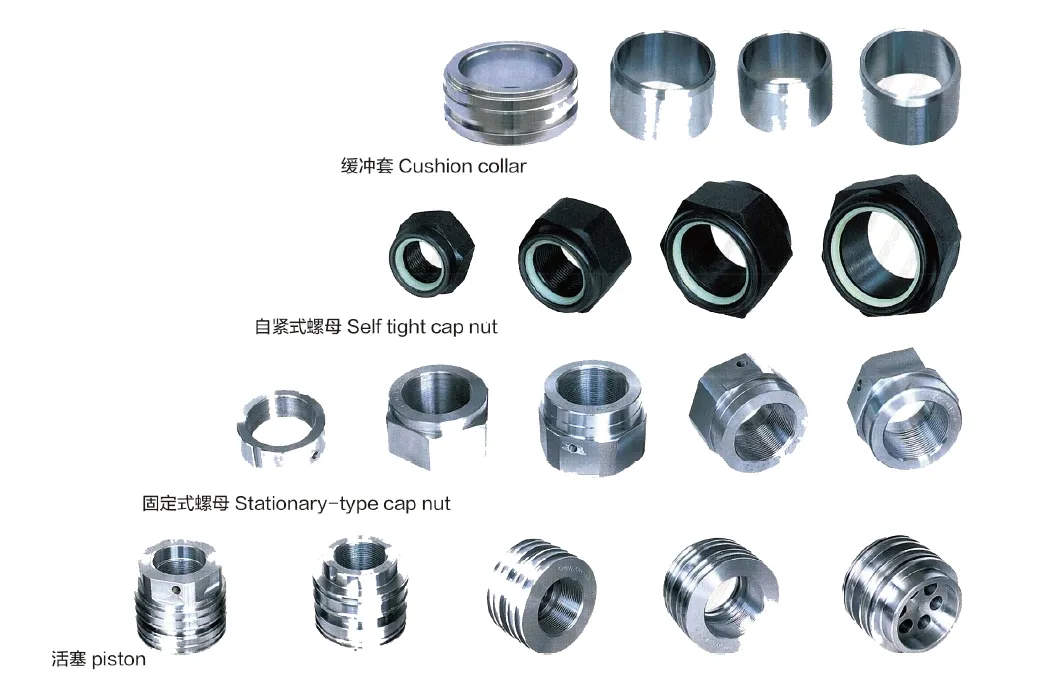
Safety Considerations and Environmental Factors
When working with hydraulic systems like boom cylinders, safety measures are paramount. Operators should always wear personal protective equipment (PPE) and be trained in safe operating procedures. Hydraulic fluids can be hazardous, so proper handling and storage practices should be followed to minimize risks to both personnel and the environment.
Fault Diagnosis and Common Issues
- Hydraulic Leakage: One of the most common issues is hydraulic fluid leakage, often caused by worn seals or damaged hoses. Operators should regularly inspect the system for signs of leakage and address any issues promptly.
- Loss of Power: If the boom cylinder is not functioning effectively, it may result from insufficient hydraulic fluid or a malfunctioning pump. Regular maintenance checks can help identify and rectify these problems.
- Unusual Noises: Unexplained noises during operation could indicate internal damage or air in the hydraulic system. Investigating and resolving these sounds quickly can prevent further damage.
Troubleshooting Tips
To ensure the effective operation of boom cylinders, consider the following troubleshooting tips:
- Identifying Leakage: If leakage is detected, locate the source by inspecting seals and fittings. Replace any damaged components to restore proper function.
- Checking Fluid Levels: Ensure that hydraulic fluid levels are adequate. Low fluid levels can lead to performance issues; top up with the recommended fluid if necessary.
- System Purging: If air is trapped in the system, perform a purging process to remove air bubbles. This can enhance the performance and reliability of the hydraulic system.
Implementing preventive measures is crucial in minimizing potential problems and extending the lifespan of the boom cylinder.
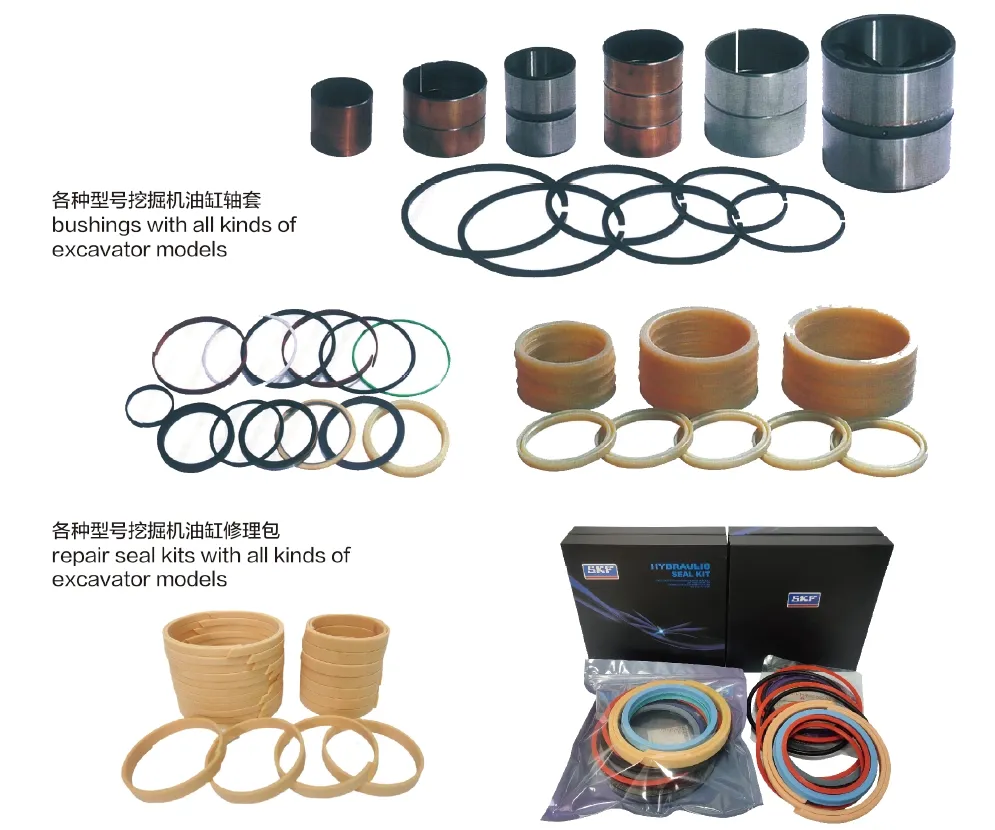
About Our Company
We are a leading manufacturer of hydraulic cylinders, specializing in providing high-quality replacement solutions for various machinery. Our extensive product range positions us as one of the top manufacturers and wholesale distributors in both domestic and international markets. We adhere to excellence while employing a refined industrial production management strategy.
Our commitment to quality is supported by a skilled workforce, advanced digital manufacturing equipment, and a professional testing system. We continuously enhance our manufacturing platforms to ensure the highest quality production process, backed by strong innovation capabilities. Our principles of high efficiency and precision allow us to meet diverse customer demands effectively.
Additionally, we offer professional services, international certifications, and customized solutions. Our state-of-the-art equipment and robust after-sales service further solidify our position as a trusted provider in the hydraulic cylinder industry.
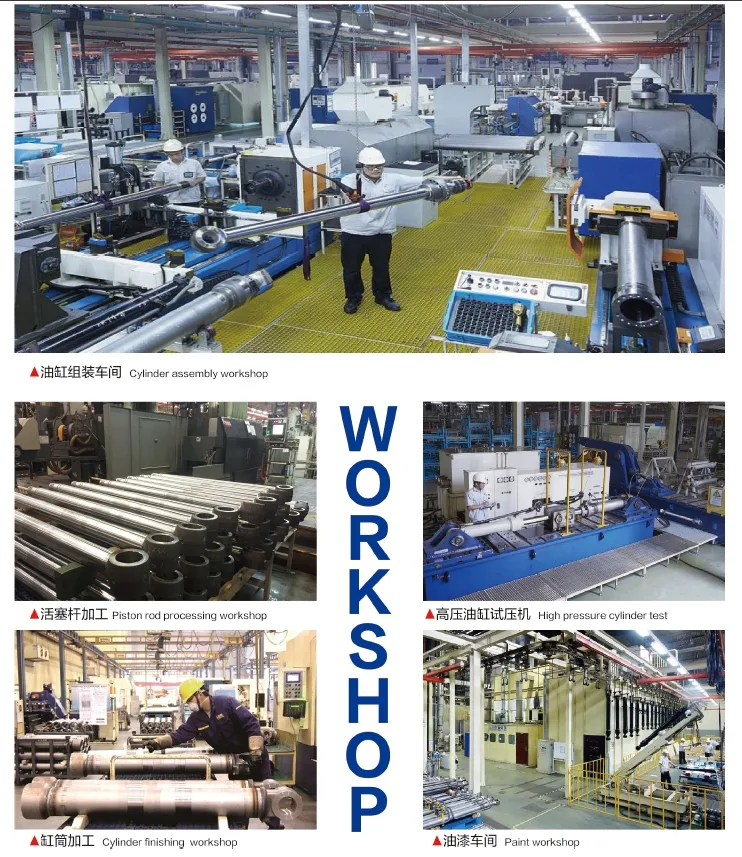
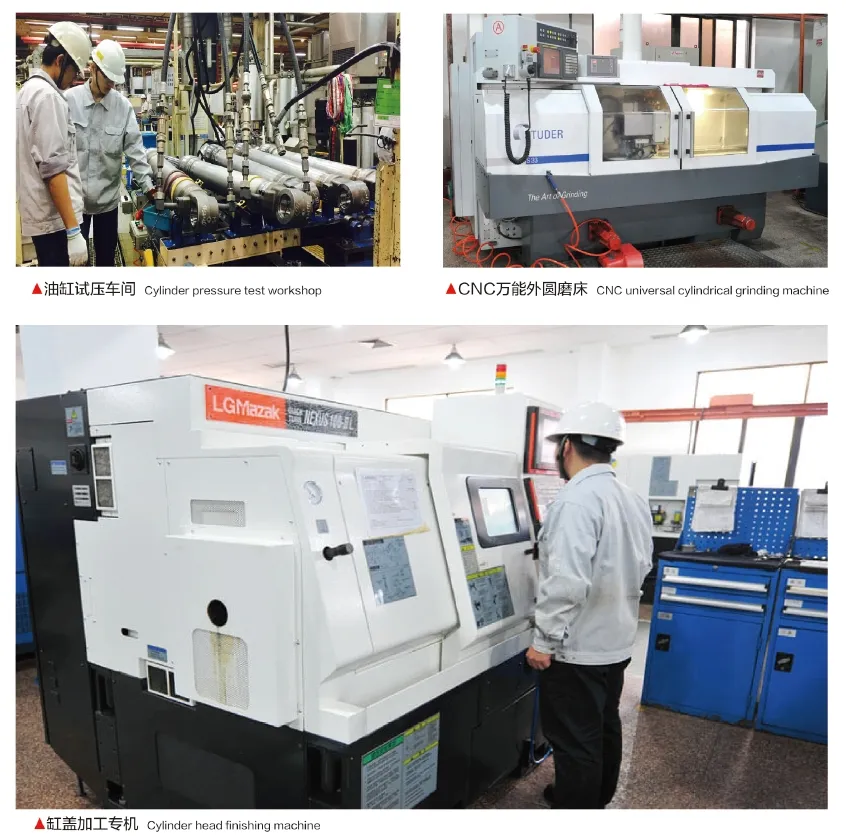
Author: lyl
Take a Tour of Our VR Factory:
Take a tour of our VR factory with the following
Hydraulic Cylinder Application:


